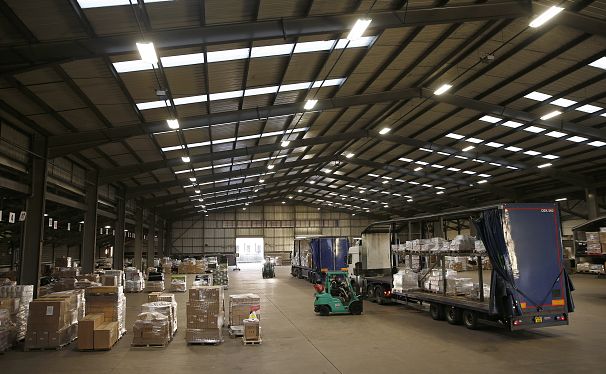Why is the UK embroiled in a row over the EU's Customs Union? Theresa May's government is committed to leaving it but her cabinet can't agree on an alternative.
Britain is confident it can agree a solution on post-Brexit customs arrangements, Theresa May’s spokesman said on Thursday, the day after her inner cabinet failed to reach consensus on a suitable model.
Future UK-EU customs arrangements have been emerging as the crucial Brexit issue. May’s government is committed to leaving the bloc’s customs union in order to pursue an independent trade policy and be able to strike deals with countries around the world. At the same time, it wants trade with the EU to be as frictionless as possible.
Countries in a customs union agree to a common external tariff. Internally, goods circulate between nations without tariffs or checks. The UK exports some 50% of its goods to the EU.
How to trade – and take back control
Pro-Europeans argue some kind of customs union with the EU is necessary to avoid border controls which would bring major disruption and economic damage. Government-commissioned economic analysis suggests being outside such an arrangement would hit growth.
The question is also relevant to one of the key goals agreed by the UK and the EU: avoiding a hard border between Northern Ireland, which is part of the UK and in future outside the EU, and the Republic of Ireland, an EU member state.
For Brexit backers, the question has become a litmus test on whether the UK is really leaving the European Union. They want a clean break from the EU’s system, arguing that a customs union would leave Brussels in charge of Britain’s trade policy: the UK would have to adopt the EU’s trade deals without having any say.
‘Bonkers’ plan
The British Conservative government and parliamentary party are divided on the issue, which has brought to a head long-standing arguments over a so-called "hard" and "soft" Brexit. Caught between a rock and a hard place, Theresa May proposed a compromise solution which was rejected on Wednesday by her inner cabinet. Officials have been sent back to the drawing board to find a solution.
The prime minister’s suggestion of a hybrid “customs partnership” model – a complicated set-up where the UK would mirror EU arrangements and collect tariffs for Brussels, allowing goods to flow freely – had already been described by Eurosceptics as “bonkers”. Sixty Tory MPs from the pro-Leave European Research Group, led by arch-Brexiteer Jacob Rees-Mogg, wrote to May to warn her against it.
Their preferred option – the “maximum facilitation” or “maxfac” model – involves new technology and “trusted trader” licences to smooth the flow of goods. Brussels does not like either proposal, with chief negotiator Michel Barnier’s team describing them as “unworkable”.
A further complication for Theresa May is her minority government’s delicate situation in Parliament. Should the prime minister side with the hardliners, pro-EU Conservative lawmakers could defeat her in the House of Commons, which has to approve a final Brexit deal. The opposition Labour Party wants the UK to remain in the EU’s customs union.
Red lines
A major difficulty concerns how to square the circle created by the British government’s so-called Brexit “red lines”. It wants no hard border between Northern Ireland and the Republic; no hard border between Northern Ireland and the rest of the UK; freedom to negotiate British trade deals with other countries, and trade “as frictionless as possible” with the EU.
Concerning customs, the devil has well and truly surfaced with the details – which would appear to have exposed the UK’s red lines as being in contradiction with each other.












